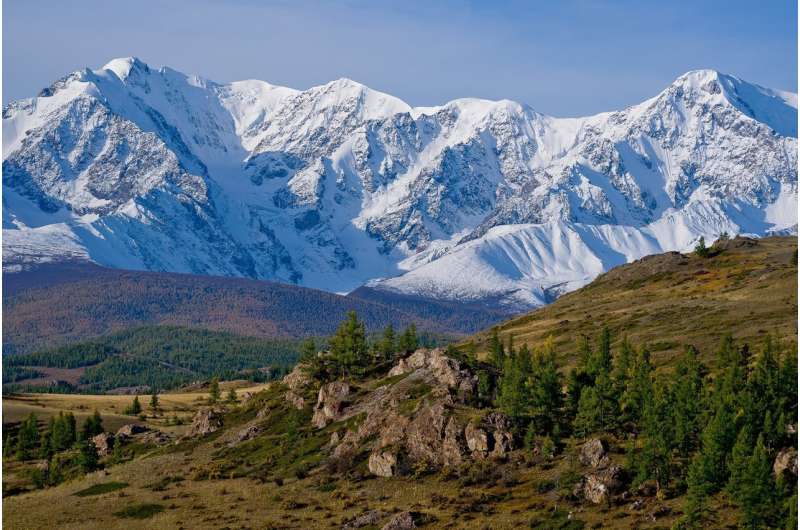This article has been reviewed according to Science X's editorial process and policies. Editors have highlighted the following attributes while ensuring the content's credibility:
fact-checked
trusted source
proofread
Study reveals changes in glaciers, snow cover and permafrost in Chinese Altai mountains since 2000

The Altai Mountains are located in the eastern hinterland of Central Asia, bordering Russia, China, Mongolia, and Kazakhstan. Chinese Altai Mountains, located in the north of Xinjiang Uygur Autonomous Region, belongs to the southern slope of the middle section of Altai Mountains. As an accumulation area of major cryosphere elements, cryosphere changes in the Chinese Altai Mountains have important impacts on regional water resources and ecosystems.
A research team led by Prof. Wang Puyu from the Northwest Institute of Eco-Environment and Resources of the Chinese Academy of Sciences has investigated cryosphere changes and their impacts on regional water resources in Chinese Altai Mountains from 2000 to 2021, based on the latest multi-source data, such as remote sensing, ground stationary observations, and route surveys.
The results were published in CATENA on Nov. 5.
The researchers found that glaciers in the Chinese Altai Mountains have been shrinking and thinning since 2000, driven by rising temperature and increased snowfall.
Compared with 2000–2010, the rate of glacier area shrinkage and surface elevation thinning in the Chinese Altai Mountains slowed down from 2010 to 2021.
It was found that the snow-cover depth and water equivalent increased significantly from 2000 to 2021, but the snow cover area showed a slight decreasing trend.
In addition, the researchers also showed that the permafrost area decreased and the active layer thickness increased in the Chinese Altai Mountains.
In general, the contribution of the cryosphere elements of the Chinese Altai Mountains to the runoff of the Irtysh River is about 41.9%, of which snow-cover meltwater contributes the most to the river runoff, about 37.1%, the glacial meltwater contributes about 2.9%~3.4%, and the permafrost contributes about 0.6%.
More information: Puyu Wang et al, Cryosphere changes and their impacts on regional water resources in the Chinese Altai Mountains from 2000 to 2021, CATENA (2023). DOI: 10.1016/j.catena.2023.107644
Provided by Chinese Academy of Sciences




















